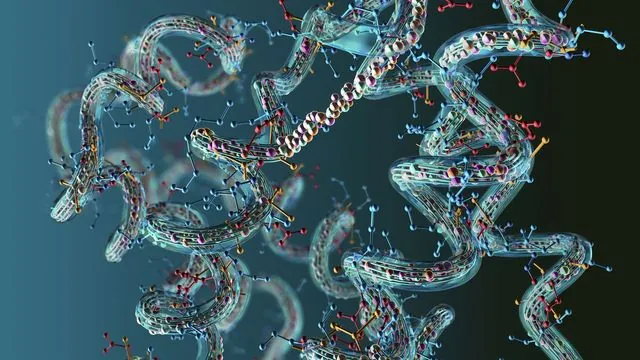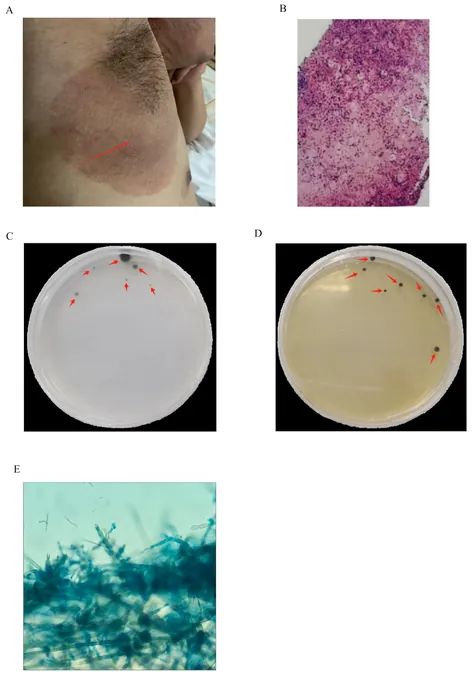
Breakthrough Discovery Unveils How α-Synuclein Spreads in Parkinson's Disease
2025-04-14
Author: Wei Ling
A Closer Look at Parkinson's and Lewy Body Dementia
Parkinson’s disease (PD) and Lewy body dementia (LBD) are devastating neurodegenerative conditions that impact millions worldwide. While PD affects around 10 million people globally, LBD remains shrouded in uncertainty regarding its prevalence. Both disorders are characterized by the presence of Lewy bodies—abnormal aggregations of α-synuclein protein that wreak havoc in brain cells.
A Revolutionary Study Reveals New Insights
In a groundbreaking study led by HE Zhuohao and his colleagues at the Shanghai Institute of Organic Chemistry, researchers have uncovered the pivotal role of the elusive "fuzzy coat" surrounding α-synuclein fibrils. Published in *Neuron* on April 10, this research shifts the focus from the rigid core of Lewy bodies to the flexible, disordered regions that extend from it, shedding light on the prion-like spread of pathology in synucleinopathies.
Innovative Methods Expose Structural Variants
The scientists employed cutting-edge techniques such as cryo-electron microscopy and solid-state nuclear magnetic resonance to mimic the transmission of pathogenic proteins. They identified two distinct structural variants of the fibrils: the Mini-P variant, known for its compact fuzzy coat, and the Mini-S variant, which features a more extended fuzzy coat.
Mini-P vs. Mini-S: The Battle for Neuronal Uptake
Strikingly, the Mini-P fibrils displayed greater ability to seed new protein aggregates within neurons compared to the Mini-S version. This efficiency is tied to the tight conformation of the Mini-P’s fuzzy coat, which effectively shields negative charges, allowing for smoother interaction with receptors like heparan sulfate proteoglycan (HSPG) on neuronal surfaces. This interaction facilitates enhanced neuronal uptake and resistance against degradation.
A Potential Target for Therapeutic Intervention
This pivotal research not only illuminates the mechanisms governing the spread of pathological proteins between neurons—an essential factor in disease progression—but also highlights the fuzzy coat as a promising avenue for therapeutic targeting. Instead of attempting to obliterate all protein aggregates, which can be an arduous task, a more refined approach could involve manipulating the fuzzy coat to hinder fibril transmission and slow disease advancement.
Relevance to Human Disease Confirmed
The team validated their findings using antibodies that differentiate between Mini-P-like (seeding competent) and Mini-S-like (seeding incompetent) proteins in human brain tissue from synucleinopathy patients. This correlation suggests that their laboratory discoveries resonate with real-world human pathology.
A Paradigm Shift in Neurodegenerative Research
This study marks a significant turning point in our understanding of neurodegenerative diseases. By venturing beyond the conventional focus on rigid fibril cores, researchers are now poised to unravel the complex nature of protein aggregation—a revelation that could lead to more precise and effective treatments for those affected.




 Brasil (PT)
Brasil (PT)
 Canada (EN)
Canada (EN)
 Chile (ES)
Chile (ES)
 Česko (CS)
Česko (CS)
 대한민국 (KO)
대한민국 (KO)
 España (ES)
España (ES)
 France (FR)
France (FR)
 Hong Kong (EN)
Hong Kong (EN)
 Italia (IT)
Italia (IT)
 日本 (JA)
日本 (JA)
 Magyarország (HU)
Magyarország (HU)
 Norge (NO)
Norge (NO)
 Polska (PL)
Polska (PL)
 Schweiz (DE)
Schweiz (DE)
 Singapore (EN)
Singapore (EN)
 Sverige (SV)
Sverige (SV)
 Suomi (FI)
Suomi (FI)
 Türkiye (TR)
Türkiye (TR)
 الإمارات العربية المتحدة (AR)
الإمارات العربية المتحدة (AR)